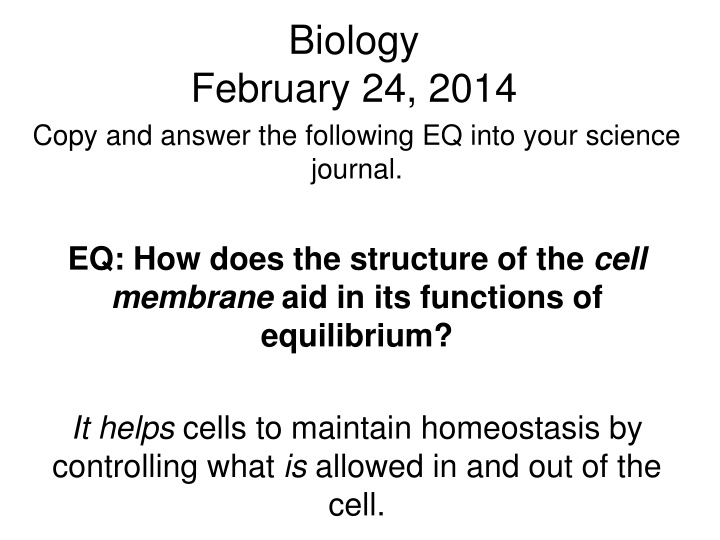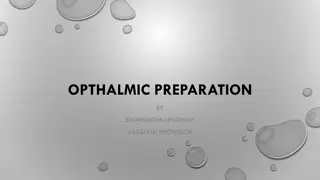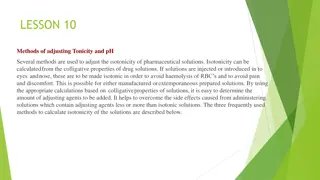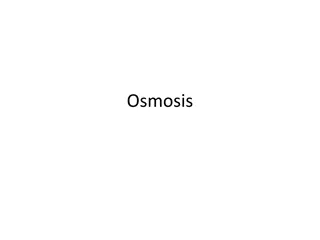
Cell Membrane Functions and Equilibrium: Understanding Tonicity and Osmosis
Explore the role of the cell membrane in maintaining equilibrium through controlling substances in and out of the cell, with a focus on tonicity, osmosis, and diffusion. Learn about important biological processes such as homeostasis, diffusion, and the regulation of internal conditions for optimal cellular functioning. Discover how semipermeable barriers enable selective passage of substances, impacting the overall equilibrium within cells. Dive into essential concepts in biology to grasp the intricate mechanisms that support life at a cellular level.
Download Presentation

Please find below an Image/Link to download the presentation.
The content on the website is provided AS IS for your information and personal use only. It may not be sold, licensed, or shared on other websites without obtaining consent from the author. If you encounter any issues during the download, it is possible that the publisher has removed the file from their server.
You are allowed to download the files provided on this website for personal or commercial use, subject to the condition that they are used lawfully. All files are the property of their respective owners.
The content on the website is provided AS IS for your information and personal use only. It may not be sold, licensed, or shared on other websites without obtaining consent from the author.
E N D
Presentation Transcript
Biology February 24, 2014 Copy and answer the following EQ into your science journal. EQ: How does the structure of the cell membrane aid in its functions of equilibrium? It helps cells to maintain homeostasis by controlling what is allowed in and out of the cell.
Word of the Day Semipermeable A barrier that permits the passage of some substances but not others.
Here is what is going on this week Your workbook, Ch 7 pp 71-84 is due today! Prefix/Suffix quiz part 2 on Friday Complete the lab in your workbook pp 35-40.
Tonicity Tonicity is a measure of the osmotic pressure gradient of two solutions separated by a semipermeable membrane
Diffusion is the movement of molecules from a high concentration to a low concentration. Examples- Spraying air freshener in a room The odour of food cooking diffuses throughout the kitchen and spreads into the next room.
Osmosis- It is the diffusion of water through a semipermeable membrane from a more dilute solution to a more concentrated solution. Examples: Absorption of water by plant roots. Reabsorption of water by the nephron in kidneys Absorption of water by the alimentary canal stomach, small intestine and the colon.
Equilibrium To regulate internal conditions in order to stay healthy and functioning, regardless of the outside changing conditions.
There are 3 types of situations in which this could vary: Hypotonic Isotonic Hypertonic
There are 3 types of situations in which this could vary: 1. Hypertonic In HYPERTONIC solutions, water moves out of the cell. Hypertonicity causes cells to shrink. Plants cells lose water and start to wilt. The process of water moving out of a cell is called plasmolysis. More H2O moves out of the cell.
2. Isotonic Water DOES or DOES NOT stop moving. Cells reach a point called Dynamic Equilibrium in isotonic solutions. Equal amounts of water are found inside and outside of the cell. H2O moves in and out of the cell equally.
3. Hypotonic In HYPOTONIC solutions, water moves into a cell. Animal cells increase in size and burst or lyse in these solutions Bursting of cells is called cytolysis. Plant cells need this tonicity to be at homeostasis. Turgor pressure results from water inside a plant cell pushing the cell membrane out against the plant s cell wall. More H2O moves into of the cell.
Cells in Solution Models Each cell has a 10%, or 6% NaCl (salt) solution in an ENVIRONMENT with either a 3%, 10% or15% salt solution. COLOR the cell yellow and the environment light blue. Using RED, draw arrows showing the direction of movement of water into or out of the cell. 15% NaCl 10% NaCl






















